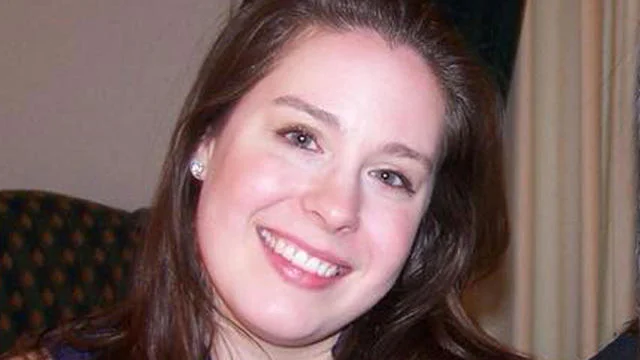Kelly Dwyer Killed in Milwaukee Wisconsin
The case of Kelly Dwyer is one that continues to haunt Milwaukee, Wisconsin. On October 12, 2013, the 27-year-old woman vanished under suspicious circumstances, leaving friends, family, and law enforcement puzzled. Her sudden disappearance sparked an extensive investigation that would stretch on for nearly two years before the grim truth was revealed.
Kelly was a young, vibrant woman known for her friendly nature and active social life. She had recently moved to Milwaukee, where she worked as a sales representative. On the evening of October 10, 2013, Kelly went out with friends, which was not unusual for her. However, what began as a routine night of socializing quickly turned into a nightmare.
Security footage captured Kelly entering the apartment of Kris Zocco, a man she had been dating casually. It was the last time anyone saw her alive. Her phone records showed that her last known location was in the vicinity of Zocco’s apartment. When Kelly did not return home or show up for work the following day, her friends and family grew increasingly concerned.
The search for Kelly Dwyer began almost immediately. Posters were put up around the city, social media posts circulated her photo, and local media reported on her disappearance. Despite extensive searches and appeals to the public for information, no one could locate her. Suspicion quickly shifted to the man she was last seen with — Kris Zocco.
The Investigation into Her Disappearance
As Kelly Dwyer’s disappearance made headlines, police zeroed in on Kris Zocco as a person of interest. Zocco, a businessman with a history of drug use, quickly became the primary suspect due to his connection to Kelly. Investigators uncovered a troubling pattern of behavior from Zocco, including drug-related charges that would later play a critical role in his prosecution.
When questioned, Zocco claimed that Kelly had left his apartment of her own accord. However, phone and location data contradicted his story. As law enforcement delved deeper into his past, they discovered that he had been involved in illegal activities, including possession of child pornography and drug offenses. These charges gave police leverage to keep Zocco in custody while they continued their investigation into Kelly’s disappearance.
The community watched with growing anxiety as days turned into weeks and weeks into months. Despite multiple searches, no one could find Kelly. Friends, family, and even strangers participated in search parties, but hope began to wane as the days dragged on.
Authorities knew that without a body, their case against Zocco would be much harder to prove. The absence of concrete evidence linking him directly to Kelly’s disappearance forced investigators to rely on circumstantial evidence, including witness statements, phone records, and the timeline of events leading up to her disappearance.
The Discovery of Kelly Dwyer’s Body
It wasn’t until May 2015 — nearly two years after Kelly Dwyer went missing — that searchers finally discovered her remains. Her body was found in a remote, wooded area in Jefferson County, Wisconsin, wrapped in a tarp. The location was miles away from where she was last seen, raising questions about how she had ended up there.
This discovery marked a turning point in the investigation. The once-elusive mystery of her disappearance had finally become a case of homicide. Forensic experts examined the body, but due to decomposition, it was difficult to determine the exact cause of death. However, the state of the remains, along with the circumstances of her disappearance, led authorities to classify it as a homicide.
With this discovery, prosecutors now had the critical evidence they needed to formally charge Kris Zocco with the murder of Kelly Dwyer. The discovery not only provided closure for Kelly’s family and friends but also set the stage for Zocco to face the consequences of his actions.
The Trial and Conviction of Kris Zocco
The trial of Kris Zocco became a high-profile case in Wisconsin. Prosecutors argued that Zocco had suffocated Kelly during a sexual encounter, citing his history of violent tendencies and the fact that Kelly’s body had been concealed in a tarp and disposed of in a remote location. The defense claimed that there was no proof of homicide, suggesting instead that Kelly may have died from an accidental overdose.
One of the key pieces of evidence was Zocco’s own behavior following Kelly’s disappearance. Surveillance footage and phone records suggested he had taken calculated steps to distance himself from the investigation. He also made statements that were later contradicted by evidence presented during the trial.
Another major factor that worked against Zocco was his criminal history. His previous convictions for possessing child pornography and his drug-related offenses painted him as someone with a history of illegal behavior. The prosecution used these convictions to portray him as a man willing to cross moral and legal boundaries.
During the trial, Kelly’s friends and family gave emotional testimony about her life, her vibrant personality, and the devastating loss they had experienced. Their words resonated with the jury, and after weeks of deliberation, Kris Zocco was found guilty of multiple charges, including first-degree reckless homicide and hiding a corpse.
The verdict brought relief to Kelly’s loved ones, who had fought for years to see justice served. Zocco was sentenced to a lengthy prison term, ensuring that he would be held accountable for his actions. The conviction sent a message to the Milwaukee community that justice, although delayed, would not be denied.
Impact of Kelly Dwyer’s Death on the Milwaukee Community
Kelly Dwyer’s death had a profound impact on the Milwaukee community. Her case was a sobering reminder of the dangers women face in social settings and the lengths predators will go to conceal their crimes. The story of her disappearance, the lengthy investigation, and the eventual discovery of her body captivated the local and national media.
Her death also prompted discussions about safety, especially for women who often find themselves in vulnerable situations. Community members organized events to honor Kelly’s memory and to promote awareness about the dangers of dating violence. Friends and family have worked to ensure that Kelly’s legacy is one of hope and change, rather than tragedy.
The story of Kelly Dwyer continues to be a cautionary tale for the Milwaukee community and beyond. Her death sparked important conversations about personal safety, accountability, and the role of law enforcement in protecting vulnerable people. To this day, her case serves as a reminder of the importance of vigilance and the pursuit of justice for victims of violent crime.
Conclusion
The death of Kelly Dwyer on October 12, 2013, remains one of the most tragic and haunting cases in Milwaukee’s recent history. Her disappearance, the lengthy search, and the eventual discovery of her body captivated the public and exposed the calculated cruelty of Kris Zocco. While justice was ultimately served, the loss of Kelly left a lasting mark on her family, friends, and the community as a whole.
Her story continues to be a cautionary tale, a reminder of the dangers posed by those who operate without conscience. Through the efforts of her family and friends, Kelly’s legacy endures as a symbol of resilience, justice, and the unyielding pursuit of truth.
Discover more from City Towner
Subscribe to get the latest posts sent to your email.




